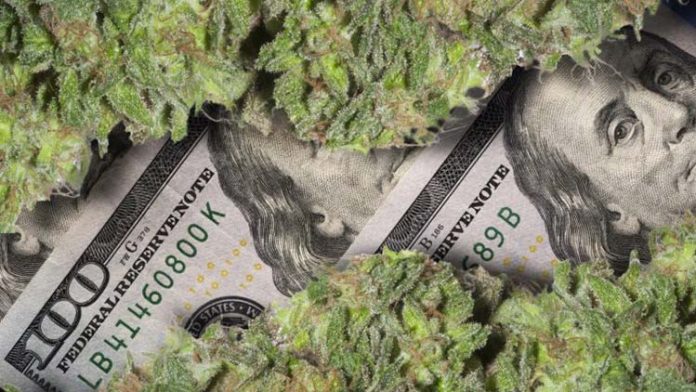An important thing to know before getting into the marijuana industry is what the current market looks like. Since most of the top analytics firms in the space collaborated in New Frontier Data’s “The Cannabis Industry Annual Report: 2017 Legal Marijuana Outlook,” you can use their figures as reference.
As per New Frontier Data’s estimates, legal cannabis sales in North America reached about $6.6 billion in 2016; recreational marijuana sales accounted for roughly 29 percent of that figure, while the remaining 71 percent went to medical marijuana. Although significant, the $6.6 billion still represents less than 12 percent of the total $56 billion Arcview Market Research estimates North Americans spent on weed last year.
“Legalization is supposed to accomplish three goals: to stop criminalizing people for pot (when it’s nonviolent, peaceful people); to stop criminalizing the existing industry; and to stop spending law enforcement money on marijuana law enforcement,” Cannabis Culture’s Jodie Emery argues.
Scott Greiper is the president of Viridian Capital Advisors, an investment bank and advisory practice in the legal cannabis industry. “One of the more unique dynamics of the cannabis industry is that it’s a very large cottage industry — by Bloomberg measures, $40 billion to $50 billion in annual cannabis consumption in the U.S.,” he points out, predicting a migration toward industrial-scale providers run by executives with proven track records in other industries over the next few years.
Legal sales are currently surging at a compound annual growth rate of 16 percent; New Frontier expects them to surpass $24 billion by 2025. Over the longer term and under a federally legal regime, Greiper has argued that the U.S. marijuana market (including ancillary businesses) could exceed $100 billion in value.
Adding to the point about growth, Arcview Market Research’s editor in chief Tom Adams says, “I’ve covered a long series of entrepreneur-started, rapidly growing industries, from home video and cable television to the internet, and I have seen only one other industry that has the growth prospects that cannabis has, and that was the broadband Internet industry.”
By way of comparison, Adams points out that the broadband Internet industry reached $5 billion in revenue and then continued to grow at a more than 30 percent compound annual growth rate (CAGR) over the following five years. Similarly, Arcview expects the North American cannabis industry to grow at a 27 percent CAGR over the next five years.
“The industry is at about 5 percent of what it will be someday,” concurs Tyler Stratford, director of client operations for cannabis consulting firm Canna Advisors. “Even if the path forward isn’t straight, we’re certainly on a path forward. The tide has changed, and there’s no turning it back now.”
No matter which numbers you look at, one thing is clear: A booming market with a pre-existing demand like the marijuana market creates an unprecedented opportunity for business ventures of all sizes and natures. And it’s not just medical marijuana that will be extremely profitable. Recreational cannabis also holds great promise. As Tom Adams, who also serves as BDS Analytics’ managing director and principal analyst, puts it, “Cannabis is the next big thing in home entertainment.”
Furthermore, according to Marijuana Business Daily’s “Marijuana Business Factbook 2017,” in 2016, roughly 70 percent of wholesale cultivators, retailers, and infused-product manufacturers declared they had hit or surpassed their break-even point within a year. While the 2017 survey revealed that this number had tumbled to 55 percent, the figures were still impressive, given that most other industries have a two- to three-year break-even period.
While researching his book on cannabis and the capital markets, Leslie Bocskor, investment banker and president of cannabis advisory firm Electrum Partners, looked into many other industries’ average break-even times, and has not found any other where “that many businesses reach break-even within a year.
“This fact acquires even more relevance when you look at how many businesses typically fail and don’t reach break-even within three years,” Bocskor asserts. “It really highlights how much economic power is being shifted into this industry.”
On the flip side, marijuana businesses operate in a legal grey area. This means they often lack access to a lot of information that traditional businesses have. There are, however, an increasing number of private research and analytics firms being founded, and they’re beginning to create the knowledge necessary to establish the industry.
Here’s a list of the top analytics firms and what kind of data each one tracks:
• The Arcview Group generates in-depth market research.
• Baker Technologies focuses mostly on point-of-sales and customer data.
• BDS Analytics also offers point-of-sales data, in addition to consumer research and industry intelligence.
• Cannabis Benchmarks has one of the most complete data sets on the wholesale market.
• Consumer Research Around Cannabis creates cross-referenced local consumer preferences data.
• Eaze shares sales data and consumer preferences information.
• GreenWave Advisors releases reports on the state of the industry, lab testing, retail sales, and the coexistence of legalized medical and recreational use marijuana markets.
• Headset focuses on market data, business intelligence, and retailer-direct data.
• Marijuana Business Daily publishes reports on financial benchmarks and business facts, as well as a licenses directory.
• New Frontier Data dives deep into the state of legal cannabis markets across the globe, and in numerous U.S. states; sales projections; diversity reports; investor studies; tax collection and potential estimates; and industrywide trends.
• Viridian Capital Advisors tracks stock performance, capital raises, and M&A activity in the public and private sectors.














